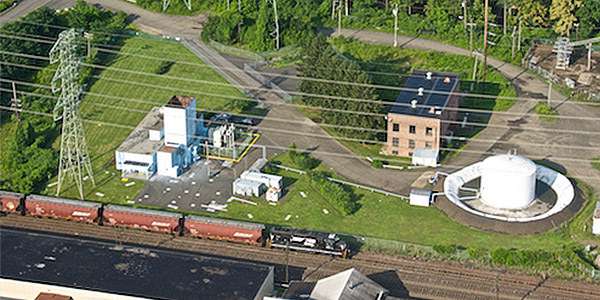By Michael Kuser
ALBANY, N.Y. — Two environmental advocates from the Sierra Club were the only commenters Monday at the first public hearing on New York’s proposed restrictions on NOx emissions from peaking power plants.
Administrative Law Judge Molly T. McBride was accepting comments and statements for the state’s Department of Environmental Conservation (DEC) at the first of three hearings planned this month on proposed revisions to the agency’s Clean Air Act regulations.
Ona Papageorgiou, an engineer with the DEC Division of Air Resources, said the addition of Subpart 227-3 to Title 6 of the official compilation of state codes and regulations is meant to lower allowable NOx emissions from simple cycle and regenerative combustion turbines (SCCTs) during the ozone season.
The new regulations are proposed to go into effect May 1, 2023, with “initial rate limits of 100 parts per million on a dry volume basis, corrected to 15% oxygen,” Papageorgiou said. Generator compliance plans will be due March 2, 2020.
The DEC plans to submit the regulatory text to EPA as a revision to the state’s Clean Air Act implementation plan. It worked with NYISO, the New York State Energy Research and Development Authority and the state’s Department of Public Service on the proposal, which would apply to resources with a nameplate capacity of 15 MW or greater that bid into NYISO’s wholesale energy markets.
EPA designated the New York metropolitan area (NYMA) as a “marginal” nonattainment area for the 2008 eight-hour ozone National Ambient Air Quality Standard but last year proposed to reclassify the area to “serious” nonattainment.
An ‘F’ for Air Quality
“We would like to take this opportunity to applaud the effort and hope it will lead to the closure of many of these aging, inefficient and polluting electric energy generating facilities,” Roger Downs, conservation director of Sierra Club Atlantic Chapter, said at the hearing.
Because the units run to meet electrical loads during periods of peak electricity demand, their operations tend to correspond with hot summer days and associated high ozone levels when heavy use of air conditioning strains the capacity of the grid, Downs said.
“The resulting air quality degradation and increased NOx profoundly affects the health of those living near these peaking plants, exacerbating the asthma, heart attacks and other respiratory ailments that contribute to tens of thousands of hospital visits annually and dozens of deaths in New York’s nonattainment regions,” he said.
DEC assessed 99 high ozone days between 2011 and 2017 and said if the older sources were replaced with newer sources, total NOx emissions from those older sources on those days would drop from the reported 1,849 tons to between 40 and 60 tons, depending on efficiency.
The resulting 1,800-ton decline in emissions over those days — an average reduction of 18 tons per ozone season day — would represent a more than 10% reduction in metro area NOx emissions from electricity generators and an overall 3.5% reduction from all sources, the agency said. Analysis showed that, on high ozone days, newer SCCTs produced 64% of the electricity generated from SCCTs while emitting only 4% of NOx emissions from these sources.
Gail Pisha, representing the Sierra Club’s Lower Hudson Group, said EPA designates Rockland and Westchester counties as nonattainment areas for ozone, and the American Lung Association rates Rockland, Westchester and Hudson counties’ air quality with an ‘F’ for ozone pollution.
The Sierra Club also “anticipates that this new regulation will facilitate better water management, as many of the ageing peaking plants also use egregious amounts of water for cooling,” Downs said. “The billions of gallons of water a day required to cool Ravenswood and Astoria Generating and other facilities drawing from New York waters also contain hundreds of millions of larval fish in eggs that are entrained and entrapped in the industrial intake structures.”
Downs said it is also important to ensure the closed plants’ generating capacity be replaced by renewable energy, and to that end the Sierra Club remains uncomfortable with some language in the regulations that could allow for more lenient air quality rules if the peaking facility accommodates onsite energy storage.
“Energy storage serviced by the same dirty fuel sources significantly undermines the overall climate and air quality goals of this regulation,” Downs said.
DEC will hold its second hearing May 13 at 11 a.m. on the SUNY campus in Stony Brook and the third hearing May 14 at 11 a.m. at the state Department of Transportation in Long Island City.
Requests for information and comments related to the SIP revision may be obtained from Robert D. Bielawa, DEC Division of Air Resources, at (518) 402-8396 or air.regs@dec.ny.gov. Written statements may be submitted until May 20.







